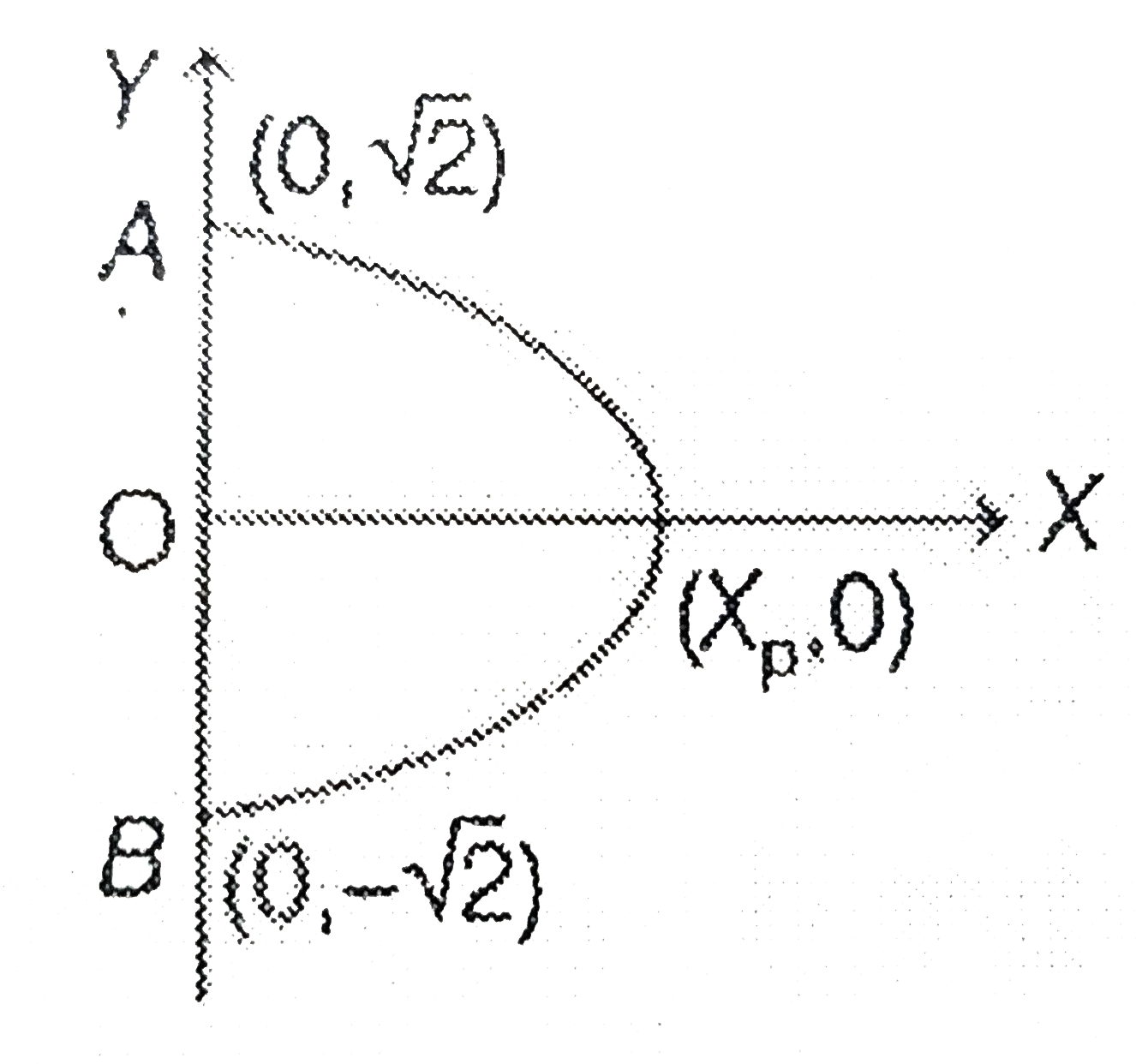If" f, is a continuous function with ∫x0f(t)dt→∞ as ∣x↦∞then show that every line y=mx intersects the curve y2+∫x0f(t)dt=2
Video Solution
Text Solution
Since , f is continuous function and ∫x0f(t)dt→∞ as |x|→o. To show that every line y = mxintersects the curve y2+∫x0f(t)dt=2
 Hence , (0,√2),(0−√2) are the point of intersection of the curve with the Y - axis.
Hence , (0,√2),(0−√2) are the point of intersection of the curve with the Y - axis.
As →∞,∫x0f(t)dt→∞ for a particular x (say xn), then ∫x0f(t)dt=2 and for this value of x , y =0
The curve is symmetrical about X - axis , thus we have that there must be some x , such that f(xn)=2. Thus , y = mxintersects this closed curve for all values of m .
|
Topper's Solved these Questions
- DEFINITE INTEGRATIONBook:IIT JEE PREVIOUS YEARChapter:DEFINITE INTEGRATIONExercise:LIMITS AS THE SUM
Explore 6 Videos
- DEFINITE INTEGRATIONBook:IIT JEE PREVIOUS YEARChapter:DEFINITE INTEGRATIONExercise:PERIODICITY OF INTEGRAL FUNCTIONS
Explore 6 Videos
- COMPLEX NUMBERSBook:IIT JEE PREVIOUS YEARChapter:COMPLEX NUMBERSExercise:TOPIC 5 DE-MOIVRES THEOREM,CUBE ROOTS AND nth ROOTS OF UNITY (INTEGER ANSWER TYPE QUESTION)
Explore 1 Video
- DIFFERENTIAL EQUATIONS Book:IIT JEE PREVIOUS YEARChapter:DIFFERENTIAL EQUATIONS Exercise:TOPIC 3 APPLICATIONS OF HOMOGENEOUS DIFFERENTIAL EQUATIONS <br> ANALYTICAL & DESCRIPTIVE QUESTIONS
Explore 7 Videos
Similar Questions
Knowledge Check
Let f(x)=∫x0f (t) dt equals
A5∫5x+5g(t)dtB∫x+55f(t)dtC2∫x+55f(t)dtD∫5x+5g(t)dtLet f:[0,∞)→R be a continuous function such that f(x)=1−2x+∫x0ex−tf(t)dt for all x∈[0,∞). Then, which of the following statements(s) is (are)) TRUE?
AThe curve y=f(x) passes through the point (1,2)BThe curve y=f(x) passes through the point (2,-1)CThe area of the region {(x,y)∈[0,1]×R:f(x)≤y≤√1−x2} is π−24DThe area of the region {(x,y)∈[0,1]×R:f(x)≤y≤√1−x2} is π−14If f(t) is a continuous function defined on [a,b] such that f(t) is an odd function, then the function ϕ(x)=∫xaf(t)dt
Ais an odd functionBis an even functionCis an increasing function on [a,b]Dnone of these
A continuous function f(x) satisfies the relation f(x)=ex+∫10exf(t)dt then f(1)=
View SolutionLet f(x) be an odd continuous function which is periodic with period 2. if g(x)=∫x0f(t)dt, then
View SolutionLet f be a continuous function [a,b] such that f(x)>0 for all x∈[a,b]. If F(x)=∫xaf(t)dt then
View SolutionIf f(x)=∫x0t2(t−2)(t−3)dtfor x∈[0,∞] then
View SolutionA function f, continuous on the positive real axis, has the property that for all choices of x gt 0 and y gt 0, the integral ∫xyxf(t)dt is independent of x (and therefore depends only on y). If f(2) = 2, then ∫e1f(t)dt is equal to
View Solution

